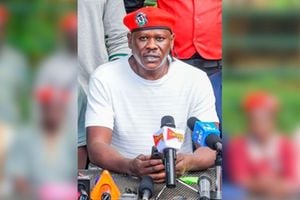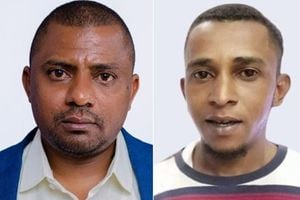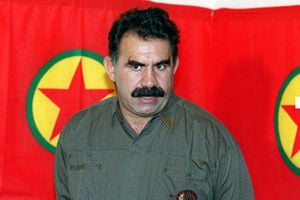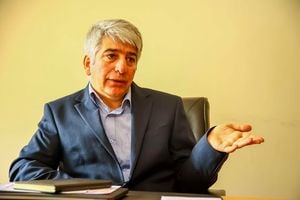
Narrations from survivors of abductions suggest the illegal holding cells/torture chambers are located in an area that has easy access to either RedHill Road, Limuru Road or Northern Bypass.
Narrations from survivors of abductions suggest the illegal holding cells/torture chambers are located in an area that has easy access to either RedHill Road, Limuru Road or Northern Bypass.
Also, these feared chambers are located in an isolated area that is forested and can easily keep captives away from the prying eyes of passers-by.
Accounts from freshly released abductees corroborate this account describing their holding cells as being in a forested and deserted place.
Geographically speaking, the triangulation of areas interconnecting the three aforementioned roads have pockets of forests that can easily provide the foliage needed to hide any house from the full view of pedestrians and motorists.
In these rooms, the abductees are tortured, slapped, stripped naked, starved to the point of death, threatened and even denied access to water and humans.
Through these roads, the captors could easily execute their business of ferrying their victims with nonchalance since they are hardly full of traffic at night or very early morning, as they did when unceremoniously dropping off their victims after squeezing information from them.
To get to Tigoni, where political activist Bob Njagi was dropped after being held incommunicado for a record 32 days by unknown masked persons wielding guns, it would take just 23 minutes to cover the 14 kilometres from Red Hill Road if one connects via Limuru Road.
Dark room
The room where he was kept was “a small, very dark, barely six by four feet. I was left on the floor handcuffed at the back and blindfolded for two days without food, I only had some water that was administered occasionally by one of the men,” he said.
Going by Mr Njagi’s narration, the drive taking him from his holding chamber took less than half an hour before he was dropped at a place where it only took him 15 minutes to get to Tigoni Police station.
The Longton brothers, Aslam and Jamil, also spent 32 days in their holding cell but unlike Mr Njagi who was in solitary confinement, they were placed at a house that had more people where “some had spent more than 90 days”.
The majority of these other captives who were sharing the room with the Longton brothers were people of Somali descent, the duo revealed.
They too, just like Mr Njagi, were picked up from their different cells, bundled into an awaiting vehicle and dropped off late in the night along Red Hill Road after a short drive. This happened on the same night that Mr Njagi was also released, indicating there was a high level of coordination between the team that abducted and released the trio on the same days.
The distance between RedHill Road and Tigoni is 15 kilometres.
Kanu Digital Communication Officer, Cornelius Rono recounted how he was accosted by three armed men who had covered their faces, roughed up and bundled into an awaiting vehicle as he left his gym at Fedha, Embakasi.
They drove for almost an hour then turned into a “bumpy road” that Mr Ronoh suspected “led into a forest”.
“I was taken into a room and I could tell from the water I stepped on that it was a house in the forest. The room was small, with a dim light bulb in the corner and you could not see everything,” he said.
To get to an area along Limuru or Redhill roads from Fedha, one would require some 35 minutes’ drive without traffic. Considering the fact that Mr Rono was arrested in the evening when there was heavier than normal traffic could explain the variance in time for travel.
A day later, Mr Rono was dropped at Ridgeways on Kiambu Road after a very short drive. One can easily connect from Limuru Road to Kiambu Road via the Northern bypass.
Kiambu Road
It is, however, interesting to note that Ridgeways, where Mr Rono was dropped, is just three kilometres from the Directorate of Criminal Investigations Headquarters on Kiambu Road.
Another victim of abduction, Joshua Okayo, the Kenya School of Law President also said that he was taken to a room following his abduction as he was heading to his house in Ongata Rongai in July.
He was forcefully carried by four men into a car while blindfolded and forced into a dingy room. His captors came back to torture him later on and asked him questions regarding who was funding them to participate in the anti-Finance Bill protests.
“When they returned later, they began hitting my ankles with metal rods, asking me the same questions. I was still blindfolded. They asked me what we stood to gain from all this. My answers were not helpful so they left me there again,” he said.
The student leader does not recall what exactly happened after this torture experience except that he was returned to the car and driven around for about two hours while being beaten up and later thrown out of the vehicle.
He was found by villagers lying alongside Maragua River in Murang’a County.
To get to Maragua River, it will take approximately two hours for a speeding vehicle coming from either Limuru Road, RedHill or Northern Bypass, an estimation that is very much in line with Mr Okayo’s narrative.
All victims of abduction say that the rooms they are taken to are very tiny and poorly lit, with some even having a pool of water on the floor to make it even more uncomfortable for its occupants.
Torture chambers - though not very common in Kenya in the past few years- were very common during the reign of the late President Daniel Moi who had dedicated rooms in Nyayo and Nyati houses to serve this purpose.
Though this is the reality in the current times in Kenya, President William Ruto has on several occasions denied that Kenyans are being abducted.











